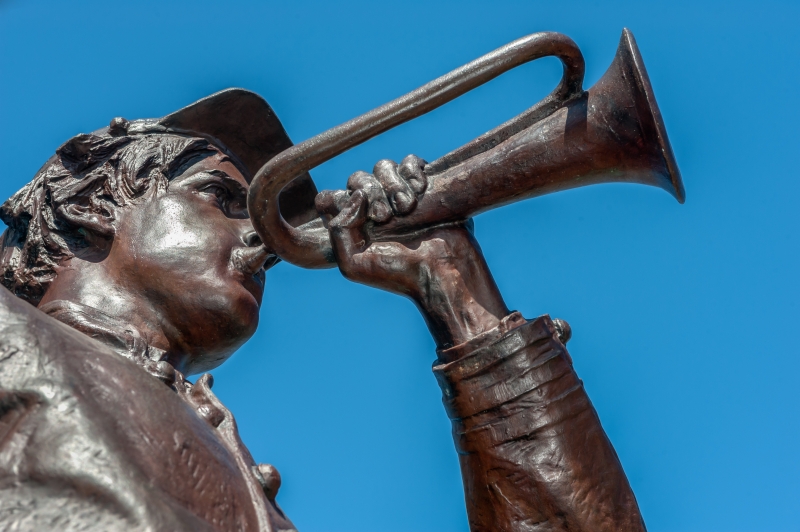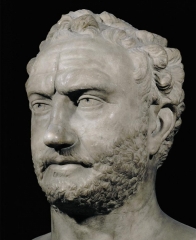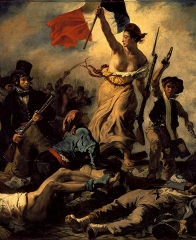 / What Confederate Monuments Do
Subscribe
/ What Confederate Monuments Do
Subscribe

Writing from Lexington in August of 1869, Robert E. Lee urged against commemorating Gettysburg with “enduring memorials of granite,” as they would only serve to “keep open the sores of war.” Instead, he asked that the country “follow the examples of those nations who endeavored to obliterate the marks of civil strife and to commit to oblivion the feelings it engendered.”
Lee’s sentiments seem especially prescient in light of the events of Charlottesville on August 12, 2017, when white supremacists and neo-Nazis descended upon a memorial of Lee himself—erected in 1924 and now slated for removal—to riot against the perceived attack on their “heritage.”
It is estimated that there are nearly 1,000 Confederate monuments across America, with the majority in southern states. As debates roil regarding the future of Confederate monuments, perhaps the most compelling argument put forward for keeping them in place is that their removal would sanitize our history, whitewashing from the public sphere memories of our collective national heritage. Those who hold this view, however, are probably unaware that Confederate monuments are the unfortunate result of a successful sanitization of history that has already occurred.
This earlier sanitization becomes evident when we learn that the overwhelming majority of these monuments were not erected in the immediate aftermath of the Civil War to commemorate it. Rather, they were erected during Jim Crow by Lost Cause Confederate apologists—whites nostalgic for the antebellum South with a vested interest in maintaining segregation. These monuments were part of a large-scale propaganda campaign to revise and distort the narrative of the Civil War. Lost Cause advocates attempted to drastically deemphasize the role of slavery as the major factor precipitating the Civil War. They also peddled the notion that Confederate leaders, particularly Lee, deeply lamented the institution of slavery and therefore practiced it benevolently.
Both of these Lost Cause narratives are myths according to the historical record, which includes the numerous speeches given by Confederate leaders themselves. Take, for example, the 1861 Cornerstone Speech delivered just weeks before the outbreak of the Civil War by Confederate vice president Alexander H. Stephens, in which he laid bare the principles of the Confederate constitution:
The new constitution has put at rest, forever, all the agitating questions relating to our peculiar institution African slavery as it exists amongst us the proper status of the negro in our form of civilization. This was the immediate cause of the late rupture and present revolution. [….] The prevailing ideas entertained by [Jefferson] and most of the leading statesmen at the time of the formation of the old constitution, were that the enslavement of the African was in violation of the laws of nature [….]. Those ideas, however, were fundamentally wrong. They rested upon the assumption of the equality of races. [….] Our new government is founded upon exactly the opposite idea; its foundations are laid, its corner-stone rests, upon the great truth that the negro is not equal to the white man; that slavery subordination to the superior race is his natural and normal condition.
The centrality of slavery to the Civil War would later be downplayed by prominent Lost Cause texts, such as Lyon Gardiner Tyler’s A Confederate Catechism of 1929. He, like many others, cast the war as a struggle of states’ rights against an overreaching federal government. But Tyler also inadvertently confirms that slavery was the cause of the war even as he attempts to refute it:
Was slavery the cause of secession or the war? No. Slavery existed previous to the Constitution, and the Union was formed in spite of it. Both from the standpoint of the Constitution and sound statesmanship it was not slavery, but the vindictive, intemperate anti-slavery movement that was at the bottom of all the troubles.
A timeline of the construction of Confederate monuments published by the Southern Poverty Law Center aptly illuminates the context of their erection in the thick of Lost Cause propaganda. An initial spike in monuments is seen with the founding of the KKK in 1866, but the largest wave began in the aftermath of the Supreme Court’s 1896 ruling in Plessy v. Ferguson, which affirmed the ‘separate but equal’ dictum of Jim Crow segregation. The highest peak of Confederate monument-building coincided with the founding of the NAACP in 1909 and the two years following. A second wave emerged with the civil rights movement, beginning with Brown v. Board of Education in 1954 and the efforts to desegregate schools. Not surprisingly, more schools were named after Confederate icons or had Confederate memorials erected on their property during this period than any other.
Confederate memorials certainly commemorate a history, but it’s not the history of the Confederacy. Rather, they commemorate a history of how Confederate symbols have been mobilized as white backlash against the attainment of black civil liberties throughout this country’s post-Civil War era. Those responsible for raising these statues to give their entrenched racism a veneer of bronze-cast respectability are the true culprits of historical sanitization. If we really desire to memorialize an un-sanitized history of the Confederacy, we would need monuments to the millions of lives stolen by chattel slavery and to African Americans’ hard fight for equality in the face of systemic oppression. How many of those exist in relation to the hundreds of Confederate monuments littering our country’s landscape?
Those who constructed Confederate moments, just as those who rallied around one in Charlottesville, sought and continue to seek the preservation of the institutionalized supremacy of their skin color in the face of its threatened loss. In the words of art historian W.J.T. Mitchell, monuments want to “defeat history because they don’t want to be history. They want to be alive in the present, so they are these creatures of memory. The monument is this impossible project to keep the past [….] alive in the present.” Such monuments originally aimed to define collective public memory and heritage—something inclusive in its connotations—as strictly white. White supremacists today still look to these monuments to do that same work.
I grew up in the Deep South. It’s a place that many who otherwise pride themselves on their open-minded inclusiveness grossly mischaracterize and dismiss as being populated exclusively by regressive racists. But this mischaracterization only serves to place racism elsewhere, conveniently excusing all of us from doing the difficult work of examining how racism is equally perpetuated around and by us.
The South, like all of America, has a long way to go in reckoning with our collective past, the willful historical amnesia that surrounds it, and its connection to contemporary racism that continues to plague this country. My own middle name, Lee, carries the mark of the Confederacy. Generations ago, it became a family moniker as a tribute, so I was told in my childhood, to “the great General Robert E. Lee.” The myth of the Lost Cause in perpetuating historical amnesia has been a particularly powerful and insidious one—even in my own naming.
“Heritage, not hate” is a common refrain among amnesia-ridden defenders of the Confederate flag—the same flag waved by white supremacists in Charlottesville amid a chorus of competing racial slurs. Awakening to what Confederate symbols have always stood for—a heritage of hate that has no place being valorized upon pedestals—is one small step in undoing this amnesia. As the radical philosophe and art critic Denis Diderot declared in 1765, “My friend, if we love truth [….] let us pray god for some iconoclasts.”
Liza Oliver is assistant professor of art history and South Asia studies at Wellesley College. She researches and publishes on visual cultures of colonialism in the 18th and 19th centuries, and on the politics of cultural heritage.
Photo Credit: Bill Dowling, "Bronze cast statue with brown patina of an American Civil War solider playing the bugle." via Shutterstock, 23 August 2017.








